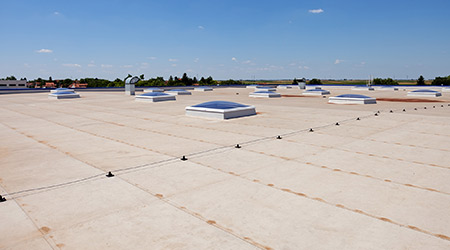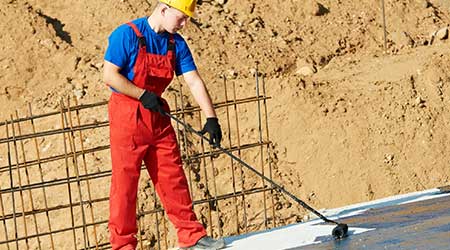
Factors to Consider When Selecting A Single-Ply Roof
February 16, 2017
It’s understandable for a facility manager to feel a little lost, given all the factors to be considered in selecting the right single-ply roof. A one-story building in a suburban area will allow attachment methods that could not produce an acceptable result if used on a high rise roof in a high wind zone. A dark colored roof in a hot climate will add to air-conditioning loads and increase the cost of running the building, so a light-colored PVC, KEE or TPO may be the best fit. However, where heating days outnumber cooling days or where the building is subject to high temperature swings, a more flexible, darker colored membrane such as an EPDM may be the most appropriate choice. An almost inaccessible roof may dictate that a membrane that is easily transportable and requires only itself for installation such as a peel and stick membrane is the best option.
Rural buildings may suffer from a lack of qualified applicators for the less-used single-ply membrane roof systems, making the more universally installed TPO, PVC, and EPDM the better options. Costs of shipping membranes to out-of-the way locales can drastically affect pricing and the effect of the transportation on greenhouse gas emissions may lead to use of a different product. The combination of factors, if properly taken into consideration when designing the roof, will eventually result in the choice of the most appropriate membrane and the first step towards a great roof.
In getting a good single-ply roof, many factors require attention. For example:
• Physical characteristics of the building including height, floor plate, location on the site, access to the roof, type and slope of deck, amount of equipment on roof and its location, drainage, and even the elevator's availability, load capacity, and size.
• Climate — wind, rain, snow, hail, heat, cold, wide temperature swings.
• Location-specific factors such as ease of access, availability of materials, and qualified applicators.
• Use of the building
• Governmental requirements including building and fire codes, zoning laws, and even local ordinances that may affect appearance, working hours, and noise reduction.
• Sustainability and environmental issues.
This quick read is from Karen L. Warseck, AIA, LEED AP, a registered architect and president of Building Diagnostics Associates. Click here for more from Warseck on keys to getting a good single ply roof. And click here for more on the roofing on Facilitiesnet.com.
Next
Read next on FacilitiesNet












